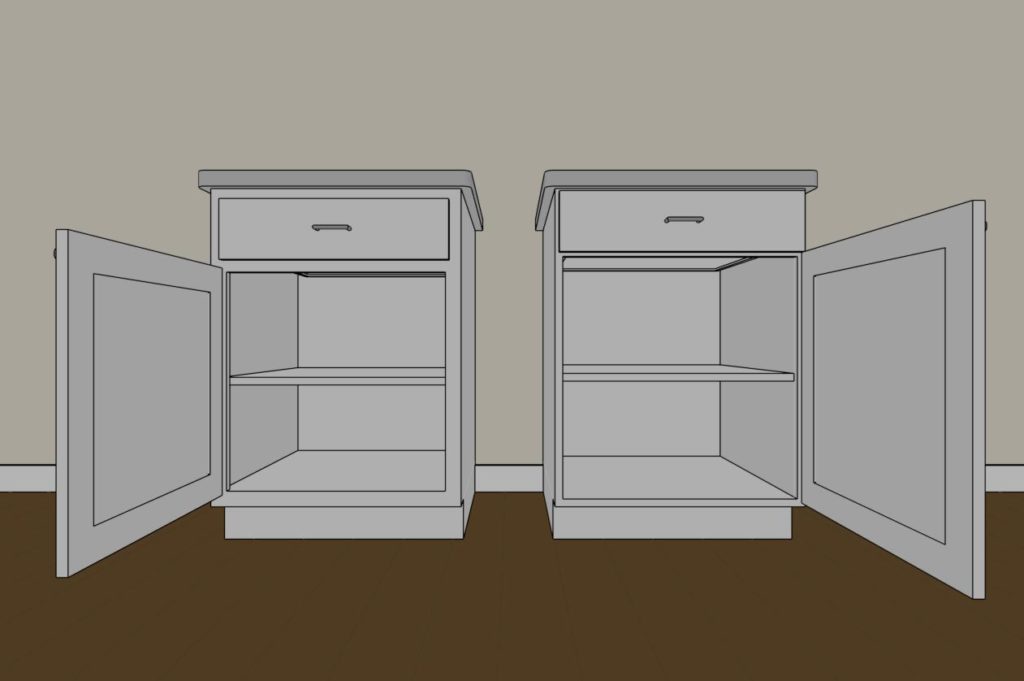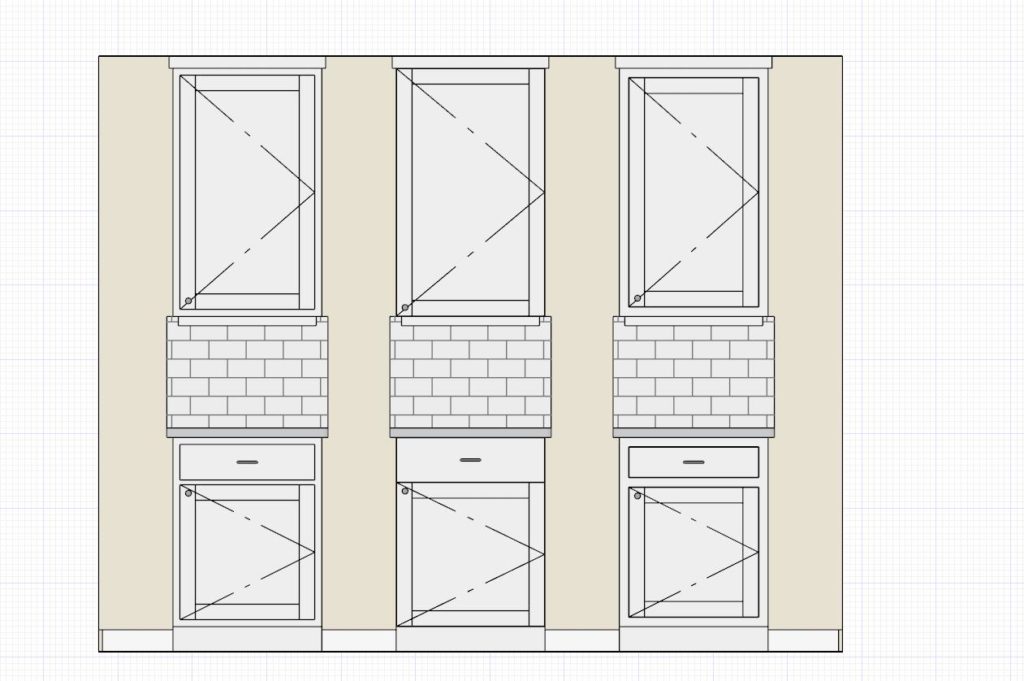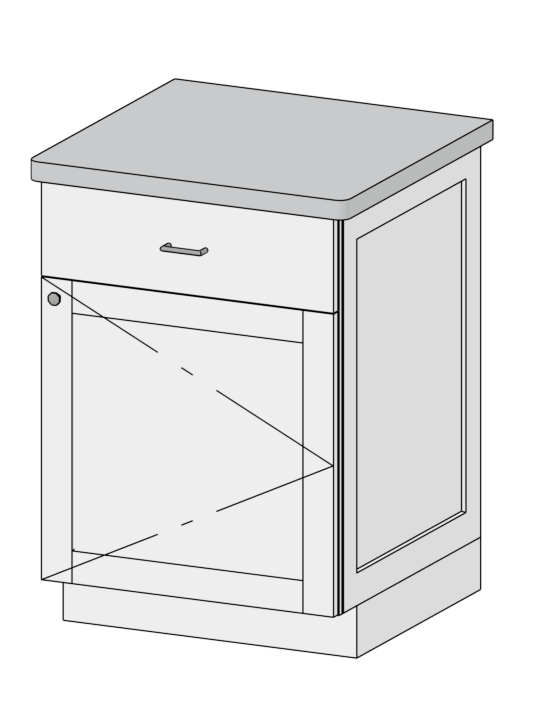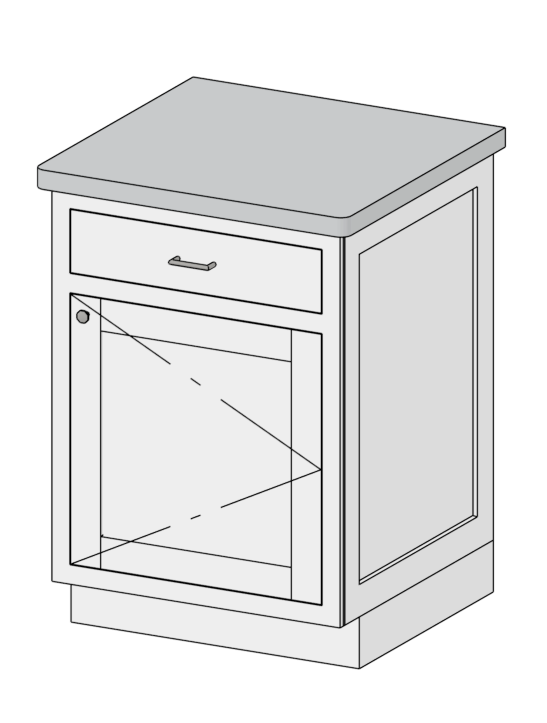There are many decisions to be made when selecting cabinets for your kitchen, bath or laundry. The main choices most people think of are painted versus stained, and door styles. Before you even get to those choices, there are two other big choices to be made: how they are built and how the doors & drawers sit on them. In this blog post, we will review framed versus frameless cabinet construction, and three different styles of door & drawer installation.

All cabinets are constructed by box size and measured the same way. A 36” base cabinet will measure 36” from the right side of the face to the left side of the face, regardless of whether it’s a framed or frameless cabinet. The back of the cabinet will be approximately 1/4” smaller to allow for adjustments. The interior will depend on the box’s construction material. Some boxes are made from 1/2” plywood and some from 3/4”. Based on this, cabinets with the same exterior measurement will then have a uniform interior measurement. The style of door does not alter this. The style of door and hinge choice do alter the opening allowance.
Framed Cabinets
American cabinet makers have traditionally made framed cabinets. Face frame construction allows the cabinet strength to come from the frame. The hinges and doors attach directly to the frame. With framed cabinets, you have many design options: full overlay, partial overlay (also known as traditional or standard), and inset. We will cover these in more detail further down in this blog.
Face frame style cabinets are versatile and timeless. You will enjoy the beauty of the wood when you look at your cabinets, as you will see not only the doors you’ve selected, but also the face frames behind them. Additionally, many face frame cabinets have finger pulls on the doors & drawers, eliminating the need for hardware. However, you can always go with an outside detail and use handles or knobs if you prefer.
Frameless (Full Access) Cabinets

Partial Overlay
This type of cabinet is the most economical and has been the norm for many years in tract housing as well as for economical remodels. As the name implies, doors and drawers of a partial-overlay cabinet will overlap the frame evenly around the opening of each cabinet by 3/8” to 1/2.” This leaves about one-to-two inches between doors, and ever so slightly decreases your opening.

Full Overlay

Also known as Euro Style, a full overlay will give you clean lines and elegance. A full overlay is an upgrade. The full-overlay drawers and doors leave just ¼” to ½” gaps between cabinet units. Because the gaps are small, this creates a seamless look. The smooth profile of these doors can work for all styles: transitional, modern, cottage, traditional or contemporary. Moldings, columns. corbels or trim added to this style lends itself to distinct originality. You will need handles, pulls or knobs.
Full overlay cabinets allow the largest possible access to the box of the cabinet. This means you’ll have maximum room for getting items in and out. On the downside, the cabinet maker must take extra care to ensure that the drawers and doors do not hit each other. This can be a challenge and takes time. Making and installing these cabinets requires a high level of knowledge and precision; therefore, full-overlay cabinets are more expensive than standard-overlay cabinets.
Whether you opt for a full or a standard overlay, both styles allow you to choose decorative embellishments, so you won’t have to compromise on aesthetic. This means you can choose whichever overlay style you prefer without worrying about losing aesthetic options.
Inset Style
For a classic or historic look, inset or flush doors are set inside a cabinet’s face frame. This style door is considered furniture grade. They are another variation of face frame style cabinets, and are considered top of the line. Add feet, a distinctive toe kick, rails, or fluted accessories to achieve any level of elegance you desire. Inset style requires extra time to manufacture and install due to the precision that go along with this grade. The margin around the doors and drawers needs to be adjusted when the cabinets are installed. This style will need handles, pulls or knobs. The hinges can be either hidden or visible.
The downside to this beautiful style is that with the expansion and contraction of wood, the spaces around the doors may grow or shrink over the course of the year, so some adjustment may be necessary. By controlling humidity levels in a home, this expansion and contraction will be minimized.

Once you have decided on a cabinet style, you will have more decisions to make: door style, wood species, paint vs. stain and color selection. Your ability to customize your kitchen continues. Your drawers can also be customized. They can be slab style or 5 piece. Typically, your door style will dictate your drawer, but it doesn’t have to be that way. You can customize your kitchen any way you like. I refer you to Square Deal Construction, LLC's design services, where they can show you what your dream kitchen will look like before it’s built.
